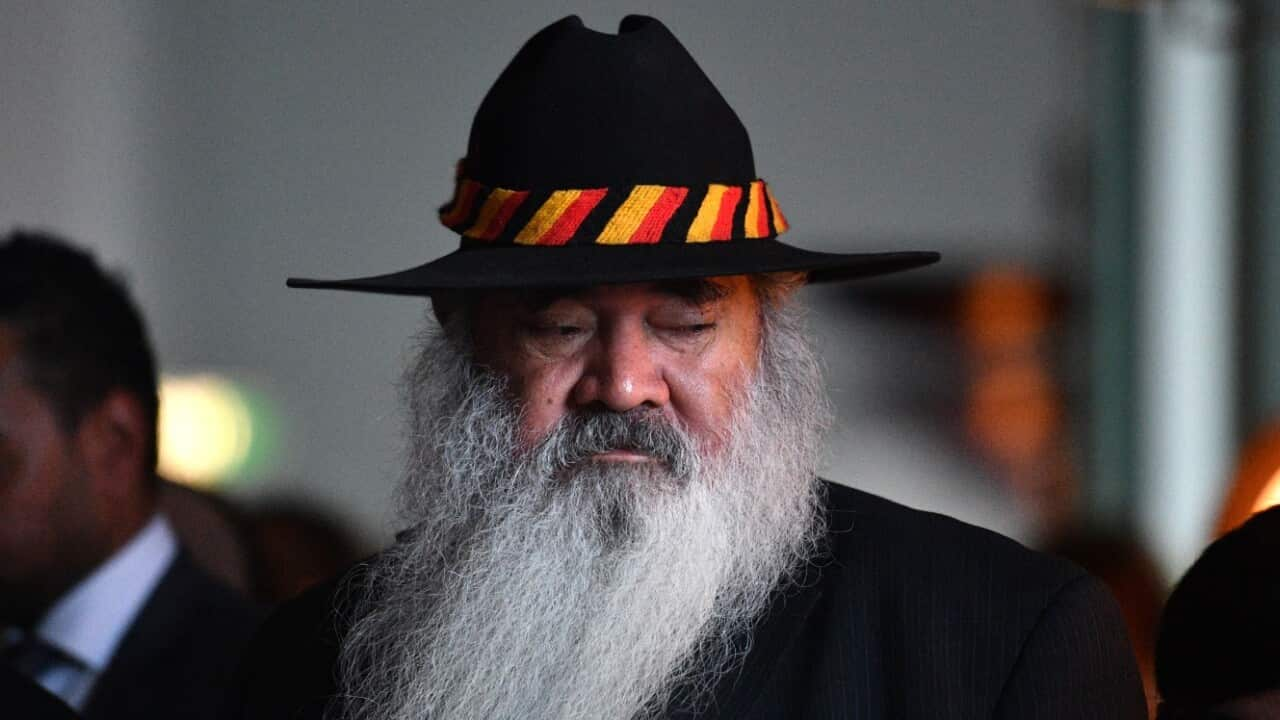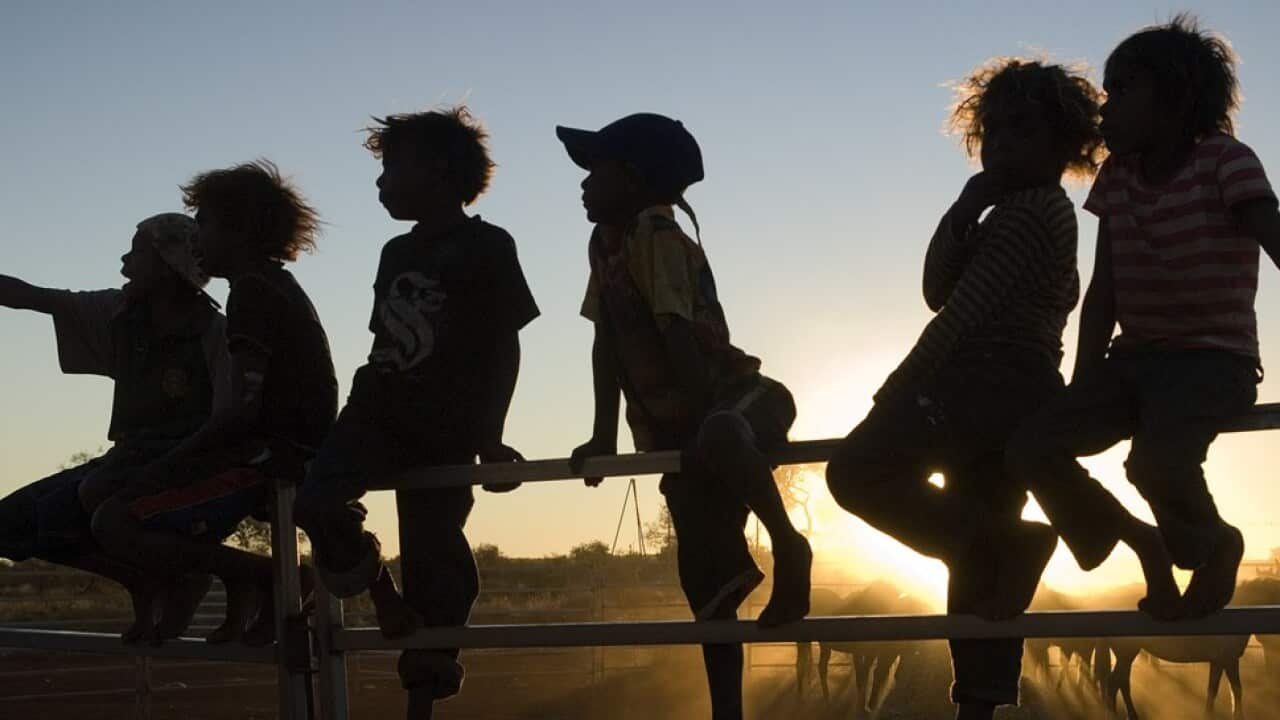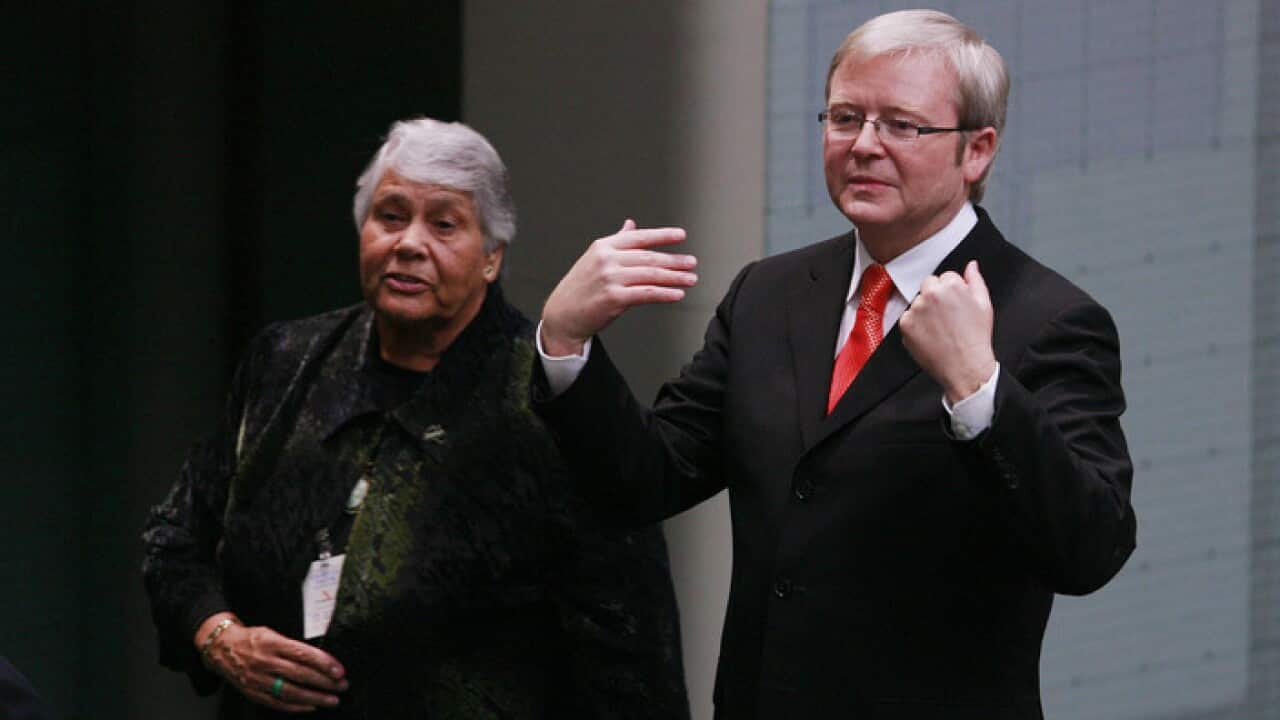Indigenous Labor Senator Pat Dodson has condemned the Turnbull government for not committing to Closing the Gap between Indigenous Australians and non-Indigenous Australians.
Speaking at the Close the Gap Campaign review, a frustrated Senator Dodson said the government has been ‘hopeless’ in its handling of Indigenous affairs.
“We’re not gonna get this sorted until June on their agenda, that’s the end of the fiscal year, so what’s gonna be in the budget commitments to any of this – because we don’t know what we’re gonna be committing too?” he said.
“That’s how hopeless this government is and how badly the Indigenous affairs portfolio’s been managed.”
Mr Dodson also called out Prime Minister Malcolm Turnbull for leaving the campaign review’s event early, saying he should’ve ‘stayed and listened.’
“It’s indicative of the deafness, of the absolute derision, and the contempt which this government is meeting out to the Aboriginal people. We gotta get real about it,” he said.
Opposition Leader Bill Shorten said there’s no doubt the hope and ambitions of ten years ago have not been fulfilled.
“The overwhelming message today is the Closing the Gap statement, the statistics, the numbers, the human outcomes are getting worse, not better, and what is now required is an absolute commitment from both sides of politics to make sure that Aboriginal and Torres Strait Islander people are included in the decision-making,” he said.
Greens Senator Rachel Siewert also criticised the government for 'effectively abandoning' the policy after five years.
"The Government needs to listen to our First Peoples who have been offering solutions on how to reach close the gap targets and genuinely Close the Gap," she said.
“We do not want to look back in another ten years and see that matters are even worse, it’s time to turn things around.”
His comments come after a review of the Closing the Gap strategy accused the government of ‘abandoning’ its commitment to the policy.
The Close the Gap campaign gathered in Canberra on Thursday to present Mr Turnbull with their assessment.
"After the initial funding commitments made for the Closing the Gap strategy … the strategy was effectively abandoned with the extensive cuts, over $530 million, made to the Indigenous affairs portfolio in the 2014 federal budget,” the committee's review stated.
Close the Gap Co-Chair, and Co-Chair of the National Congress of Australia’s First Peoples Rod Little, says the refresh process is the last chance to get government policy right, in order to achieve the goal of health equality by 2030.
"A revolving door of Prime Ministers, Indigenous Affairs Ministers and senior bureaucrats have all but halted the steady progress hoped for by First Peoples.
“The Close the Gap Campaign is led by more than 40 Aboriginal and Torres Strait Islander and non-Indigenous health and human rights bodies. No other group can boast this level of leadership, experience and expertise. We stand ready to work together with Federal, State and Territory governments. We have the solutions.
“You must get the engagement on this right. No half measures. No preconceived policies that are imposed, rather than respectfully discussed and collectively decided,” he said.
Last year’s annual report on the Closing the Gap campaign revealed six of the seven targets have not been met.
Close the Gap Campaign Co-Chair and Aboriginal and Torres Strait Islander Social Justice Commissioner, June Oscar AO, said the gap between Indigenous and non-Indigenous Australians is a ‘national shame.’
“The life expectancy gap has, in fact, started to widen again and the Indigenous child mortality rate is now more than double that of other children,” Ms Oscar said.
University of Canberra Chancellor Tom Calma was one of the driving forces behind creating the campaign during his time as Aboriginal and Torres Strait Islander Social Justice Commissioner.
“Ten years go quickly. In the proceeding time, we’ve had four different prime ministers, four different Indigenous affairs ministers, and five health ministers assuming responsibility for the commitments in the Statement of Intent,” he said.
“We can only guess at the hundreds of bureaucrats who have changed seats in that time. So how can we, as Aboriginal and Torres Strait Islander people, as the Close the Gap campaign, ever expect to have some stability when there is so much instability?”
Refresh needs more Indigenous voices
The report also urged the government to allow greater involvement of First Nations people.
"The refresh process has lacked clarity and appears to be promoting an agenda based on views within Government that have involved virtually no engagement with First Peoples in their development," the report stated.
Indigenous Labor Senator Malarndirri McCarthy said no-one from the Labor party, the Greens or minor parties have been consulted on a refresh of the strategy.
“It is an absolute disgrace that you have Indigenous members in this Parliament who were not included in, who were not invited, who were not briefed on anything to do to close the gap,” she said.
Leading Indigenous health body, the National Aboriginal Community Controlled Health Organisation [NACCHO], said the only way to close the gap in health outcomes is with the full participation of Indigenous peoples.
“The refresh process needs to give Aboriginal and Torres Strait Islander peoples and their representative bodies and their peak organisations a genuine say of the policy going forward,” it said in a statement.
Reconciliation Australia has echoed calls for the government to reset its approach to closing the gap in health outcomes.
“This is about more than setting targets. We need a structural solution to a structural problem,” Reconciliation Australia CEO Karen Mundine said.
“It’s well known and accepted that a major contributor to policy failure is that Aboriginal and Torres Strait Islander peoples are left out of the design and decision-making process.”
In December 2016, the government committed to a Closing the Gap refresh.
“Australian governments acknowledge they need to work differently with Aboriginal and Torres Strait Islander Australians,” the Closing the Gap Refresh discussion paper noted.
The Closing the Gap refresh will move to a ‘strenghs based approach’ to combat the ‘unintended consequence of compounding the racism of low expectations.’
This week, Indigenous leaders and delegates from around the country will meet in Canberra to discuss ideas and strategies on revitalising the campaign, as part of COAG meetings.
“We [the National Congress] have asked for four additional targets, which are housing, justice, family violence and child protection,” said National Congress Co-Chair Dr Jackie Huggins said.
The closing the gap strategy was introduced under the Rudd government as a commitment to improving the health, education, and employment prospects for First Nations Peoples.
This year’s Closing the Gap report will be released on Monday.













